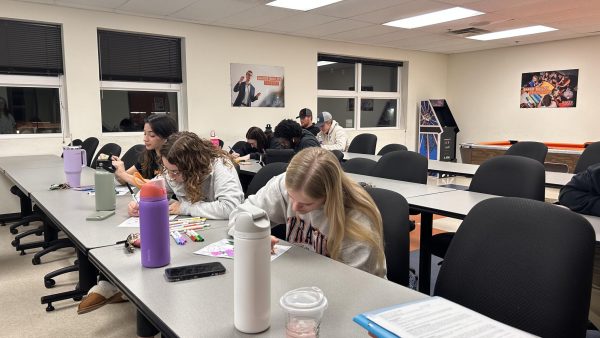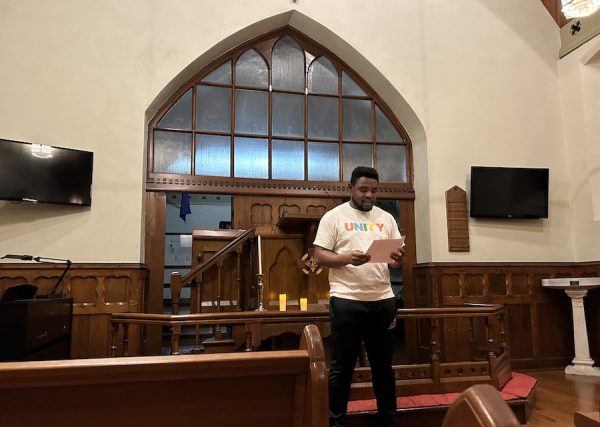Textbook requirements cause frustration
March 12, 2014
Slam! Plop! That was the sound of you shutting your 500-page, $200 textbook and throwing it to the ground after a long night of studying.
Textbooks seem to be a necessary curse for most college students: necessary for you to pass the class, but a curse to your wallet when the time comes to buy them.
“This is my Spanish book and it was like $80, which is completely ridiculous,” senior Brittany Friedel said. “Textbook prices are completely unacceptable because it’s on top of what you’re already paying for tuition. It’s just so expensive.”
In 2008, the Higher Education Opportunities Act (HEOA) was signed into federal law in an effort to ensure that students have access to affordable course materials and to create greater transparency with respect to the selection and purchase of these materials.
The HEOA Textbook Provision requires each institution of higher learning that receives federal funding to provide the “International Standard Book Number and retail price information of required and recommended college textbooks” on the institution’s Internet course schedule.
While Baker University does post the textbook lists on the registrar’s section of its website with the course timetables, the ISB numbers and prices are no longer included, which is a change from previous semesters. This has resulted in some confusion for students when they are identifying and buying the necessary course materials for classes.
Yet an even bigger reason for the confusion seems to be that most students are unaware this list even exists.
“I usually go to the (Baker) bookstore website and find all the information there because that was the only way I knew of finding the lists before classes start,” Friedel said. “The first year I was here it was on the schedules and then it completely went away and I was like, ‘what happened?’”
What happened was a change of policy in the office of Brian Posler, executive vice president of academic affairs and dean of the College of Arts and Sciences.
“The challenge was that my office was charged with inputting for each individual course those books and that was very time-intensive,” Posler said. “It would be desirable to have them in the system attached to the courses, but we just haven’t devoted the person-hours it would take to make that happen in the recent years. It is a loss of convenience for students, but there is only one URL to check, so they can go there and get the information for all of their classes.”
Some of the students who are aware of this resource still do not use it, but instead, wait until the semester starts to look for the necessary course materials.
Even Bookstore Manager Bruce Skoog acknowledges his busiest time of year is the first week of classes, not before the semester starts.
“Students always seem to want to go to class to learn what books the professor really wants him or her to have,” Skoog said.
This begs the question of whether posting the textbook information is even beneficial, or if the majority of Baker students simply wait for the first day of class to find out from the professor, or to judge for themselves, if they will really need the “required” materials to do well in the class.
“It’s few and far between where you never use the book,” Friedel said. “Usually you really need the book to pass, so I understand why we need to buy the books. But it’s just that one professor you get who puts it on there as required but you never use it. So it’s like, ‘OK, why would you do that? You’re a tyrant.’ That’s how I feel they are.”












